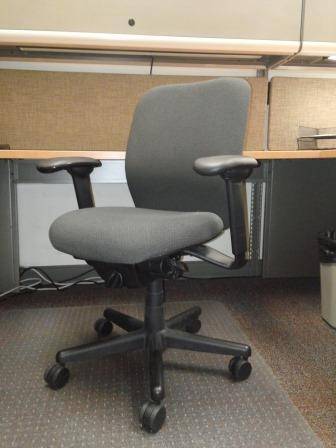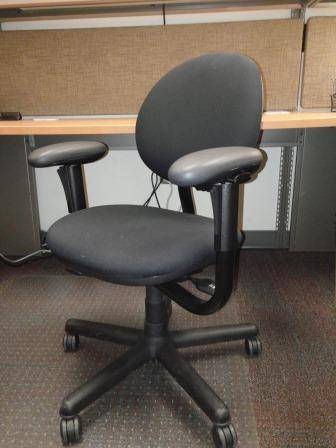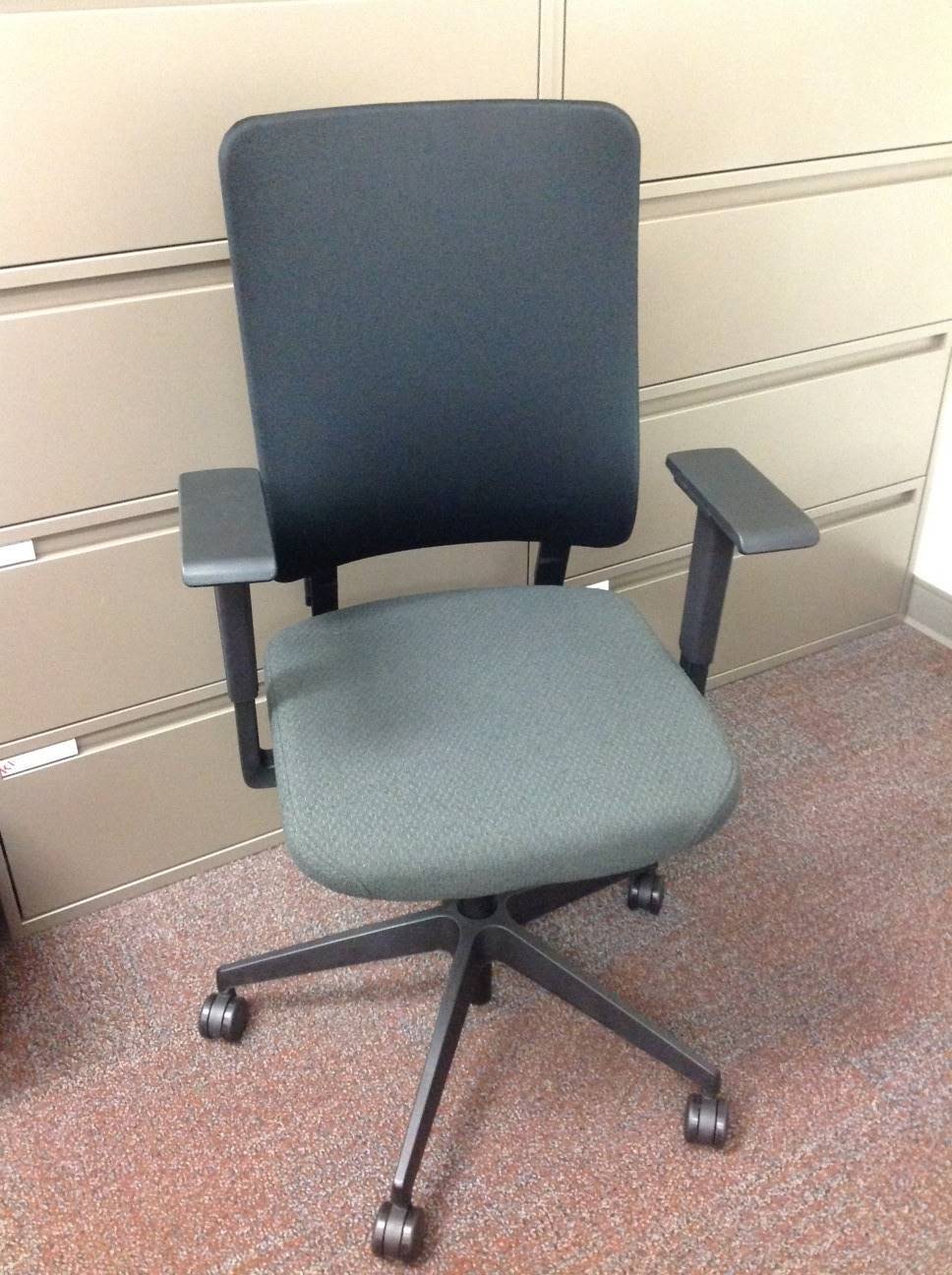Office Ergonomics
The goal of office ergonomics is to design your office work station so that it fits
you and allows for a comfortable working environment for maximum productivity and
efficiency. Harper's Office Ergonomics program is through the department of Risk Management.
Office Ergonomics is included in the EH&S/RM Manual, Section 13 .PDF
Chair Adjustments
Did you know that the chair you are sitting on might be adjustable? The two main office
chairs that we have on campus are the KI Engage chair and the Steelcase Criterion
chair. Depending on which type you are sitting in, there are many different ways to
adjust your chair for a better fit.
 KI Engage Chair
KI Engage Chair
 Steelcase Criterion Chair
Steelcase Criterion Chair
 KI FourC Task Chair
KI FourC Task Chair
Workstation Setup
Remember to maintain a neutral position, meaning:
- Your feet should be flat on the floor. Use a footrest if needed
- Your knees, hips, shoulders and elbows should all be at a relaxed 90-degree angle
- The mouse should be next to the keyboard
- The top of the monitor should be at or a little below eye level, so you are looking
slightly down at the screen
- Do you work at the computer and use a phone at the same time? If so, you might benefit
from using a phone headset.
- Do you do a lot of computer entry from paperwork? If so, maybe you should use a document
holder.
- If you do not already have one of these items and feel that you would benefit from
having it, talk with your supervisor.
For more helpful tips about your workstation, view our Ergonomic Procedure.
Or, if you are still having trouble with your chair, schedule an Ergonomic Evaluation
today by contacting ehs@harpercollege.edu or dialing extension x6929. Environmental Health staff will stop by and help adjust
your workstation.
Working From Home
Here are some general ergonomic tips to help you set up your own personal workstation:
- General Safety
- Remove any trip hazards in your working space, such as tying up loose cords
- Use a chair or boxes to block access to the trip hazard, if needed
- Use grounded extension cords and don't overload outlets
- Be aware of your surroundings and remove any dangerous items to protect children and
pets
- Using a Laptop? Don't hunch over it.
- Stack books to support the screen or use a laptop stand
- Use an external keyboard and mouse, and keep everything at the correct height
- Prevent Wrist Wrinkles
- Use a gel wrist rest, to protect your wrists from hard surfaces
- Use a folded hand towel below your keyboard and mouse if you don't have a gel wrist
rest
- Monitor Use
- Follow the 20/20/20 Rule; for every 20 minutes of looking at the computer, look at
least 20 feet away for 20 seconds
- Place your monitor 90 degrees to the placement of windows to prevent glare
- Chair Comfort
- If you are uncomfortable in the chair you are sitting in, add back support like a
rolled towel or pillows for added padding on the seat
- Footrest Options
- Knees should be even with your hips and ankles at 90 degrees
- Use a footrest to keep the knees at hip height to help your lower back
- Do not tuck your feet under the seat, as it stresses the knees
Learn more at Occupational Safety and Health Administration (OSHA).